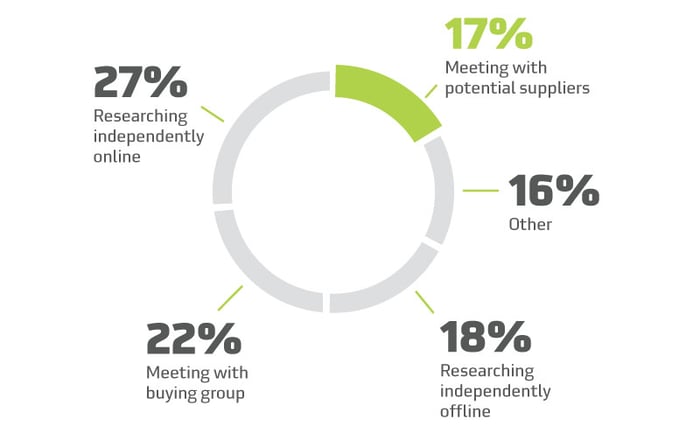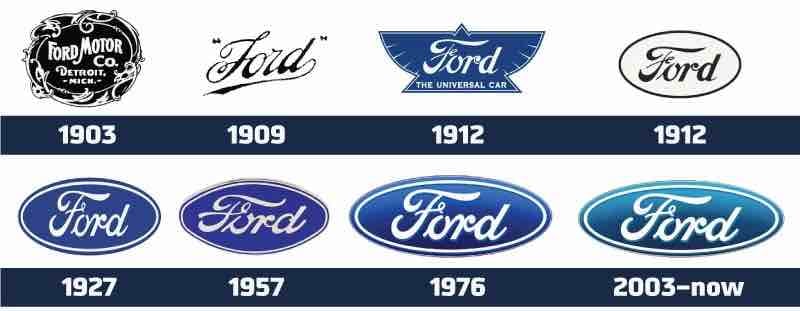Is Your Manufacturing Brand and Website Causing You To Lose Business?
 Taylor
|
Taylor
|

If customers don’t understand your brand, you could be losing revenue.
Many manufacturers miss out on revenue opportunities because their target audience fails to connect their brand with the mission, solutions, and innovation that drives their business.
It’s no surprise that for manufacturing companies to stay competitive in the marketplace, they need to continually work to be on the leading edge. To provide the best quality products, it's necessary for companies in the manufacturing industry to constantly look for ways to maintain top-notch equipment, facilities, and software.
However, there’s a disconnect when it comes to their company brand and website. Many manufacturers don’t utilize branded marketing to showcase or demonstrate their innovation or strong, trustworthy standing in the marketplace. Take a moment to think about your prospects. Knowing they may not be aware of your top-of-the-line technology or impressive commitment to innovation, how can you bring these assets to the forefront to get noticed?
Your prospective customers only know what you put out there for them to see. At first glance, you might think, well, we have a logo and a color scheme, so my bases are covered. But, ask yourself if your logo and colors are truly working for you — there's a big difference between being cutting edge and looking cutting edge. If you think your brand isn’t communicating the right message, you’re not the only manufacturing company experiencing this disconnect.
Many manufacturing companies find themselves stuck in the stage of bell-bottoms and feathered hair. Manufacturers that appear stuck in the '70s or '80s are in that position because they haven't updated their appearance. Their solutions and products may be new and innovative, but their public image is not. Can you blame prospects for overlooking a company that looks outdated and out of touch?
What impression are you making on your audience?
B2B buyers are more educated than ever before. In fact, Gartner research finds that when B2B buyers are considering a purchase, they spend only 17% of that time meeting with potential suppliers. This means prospects are beginning to qualify your manufacturing company based on what they see and the information they find independently. It doesn't necessarily matter where they are looking for the information, whether it be a website, trade-show booth, catalog, spec sheets, or other assets. The important point is they're looking for it and finding it on their own.
Long before they ever talk to your sales team or see your bright and shiny equipment, prospects qualify your company based on your branding and marketing. That means catching their attention and making it past their first impression is more important than ever. To give your sales team a chance to work their magic, you need to be aware of the impression being left on your audience when they see your company website or pick up your latest catalog.
Ask yourself these questions.
- Are we making it past the first impression?
- Do our brand and marketing align with our mission, vision, and product offerings?
- Does our branding and marketing influence potential customers in a positive way?
- Does our website, branding, or marketing leave a negative or outdated impression?
Distribution of buying groups' time by key buying activities

Source: Gartner
Taking time to evaluate your audience's view of your business and critically analyzing the answers to the above questions is something manufacturers leave on the back burner for far too long. Sometimes, that's due to a misunderstanding of the role and function of branding. A common misperception about branding is that its sole purpose is to make your company and it's assets "look good." But that view severely undercuts the value, significance, and influence of branding.
Branding is arguably one of your business's greatest assets. It gives your company an identity and the ability to stand out from others in the marketplace. It makes your business memorable, convinces prospects to buy from you, supports marketing and sales efforts, and builds trust within your industry and among your customers.
Current, relevant, and strategic branding is just as crucial for manufacturers who are cutting edge as the products and equipment they're developing.
Invest in branding built for the future.
Successful companies understand the value of branding and the impression their business has on their audience. You can have the most advanced solution in your industry or offer top-of-the-line services, but few will ever know about your company or your solutions without a way to see key distinguishers. Manufacturers make investments in branding because they believe the power of perception can help prospects understand the capabilities of their solutions and the value they provide.
Understanding and connecting with target buyers is what makes a brand and business successful. We often meet with manufacturers who understand their audience but can’t figure out how to effectively communicate with them. If you want to communicate your brand in a way that resonates with your target audience, here are some things to keep in mind.
To start, emphasize your unique capabilities. In addition to cost, manufacturing companies have to compete with each other in areas like service, logistics, and more. So, what can your company deliver that others can't? If you can identify a unique brand position, this can lead to viable marketing opportunities. By highlighting these core differentials, you can build a targeted brand strategy on core characteristics that set you apart from your competitors.
It's also important to ensure you're committed to using branding cohesively and consistently across all platforms, including printed collateral and marketing material. We see brand strategies fail for many reasons. Common occurrences we see are irrelevant, unbelievable, misaligned, and inconsistent branding. Modern B2B buyers are savvy, and they don't like it when the products, equipment, or services provided don't match what they were promised in the brand experience. They are acutely aware of branding that doesn't fit with a company’s mission or history.
Your brand can succeed as long as it's carried out credibly, constantly, and consistently. Take the Ford Motor Company as an example. Since 1927, the Ford brand has evolved and undergone numerous logo, visual, and marketing updates. Ongoing branding refreshes have allowed them to continuously evolve, staying relevant and top-of-mind in the modern marketplace. One of the many reasons the Ford brand and logo has stood the test of time is because it's built on a strong foundational message and brand: Built Ford Tough.

Source: Ford Motor Company
Ford's Denis Leary commercials, focused on blue-collar grit and hard work, speak to the pickup truck buyers of America and around the world. Ford understands their audience and embodies a brand firmly rooted in their mission. And even decades later, the Ford brand still represents hard work and functional durability, giving customers a credible and consistent experience.
A midwest shed manufacturer had a great reputation — but lacked the branding to back it up.
Dakota Storage Buildings (Dakota), a midwest shed manufacturer, found themselves in a position similar to what we've been discussing in this article. Dakota had a reputation for selling quality products and providing exceptional customer care.
While in practice, they were top in their industry, they noticed a gap in their branding and website design. Some prospects failed to grasp the message of quality and service by simply browsing Dakota’s website or flipping through their catalog. Somehow Dakota needed to connect the dots for new and potential customers.
Dakota knew they could grow their audience and increase sales if they could communicate their messaging clearly, effectively, and in a way that built an emotional connection. And this became even more critical as they looked to add new product lines while also growing existing ones. This shed manufacturing company needed a brand refresh to visually connect their premium products with their reputable values.
Much of the foundation had already been laid for the Dakota brand. They had a clear mission and defined core values that drove all aspects of their business. Their motto was Built Well. Built Tough. Now they needed to communicate that to potential customers.
Dakota spent time sharpening their brand strategy and invested in a refresh of their old branding to elevate first impressions of their company. Once vital branding pieces were put in place, including a newly designed website, Dakota could add new product lines and grow existing ones, confidently knowing that their brand aligned with their mission and connected with their customers and target audience — the perfect blueprint for growth. Read more about this Project Initiative and how we partnered with Dakota for a branding and design systems rebrand.
It’s time to get your manufacturing company noticed.
Achieving your business objectives and growth goals requires a strong foundation, including a compelling and cohesive brand. Evaluating your brand challenges can help you determine what needs to be changed to attract new customers, successfully enter new markets, stand out from the crowd, tell your story, and position your organization for future growth.
Not sure how to get started? Let us help you build a strong foundation for your brand to stand on. Take a look at our Branding and Creative Design service or start a conversation to see how your brand can be taken to the next level.
For more insights on how to drive website traffic and increase online leads, download our guide, 26 Website Redesign Must-Haves.
Subscribe to Our Blog
Stay up to date with the latest marketing, sales, and service tips.


